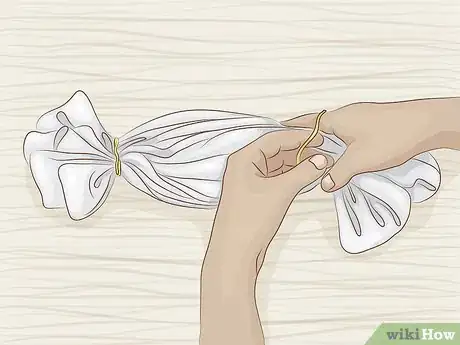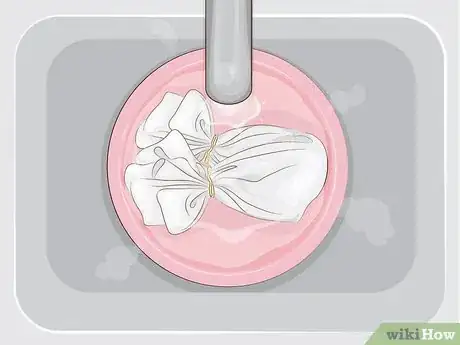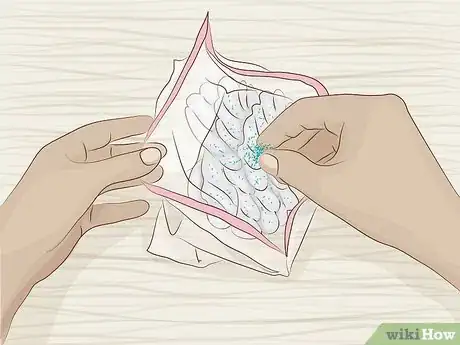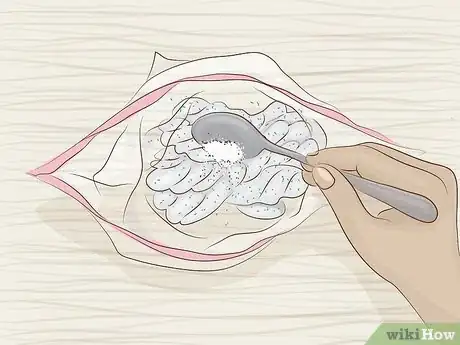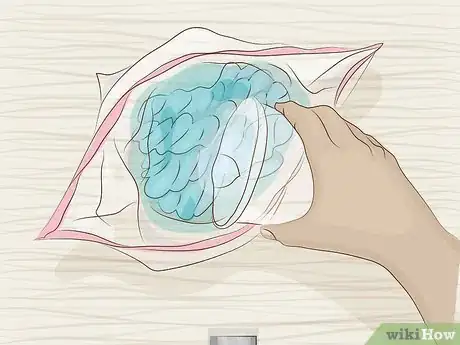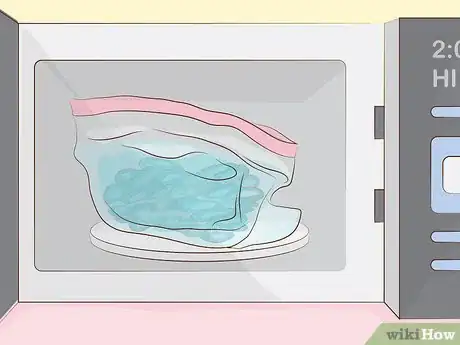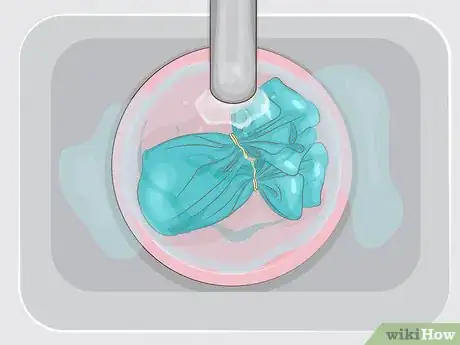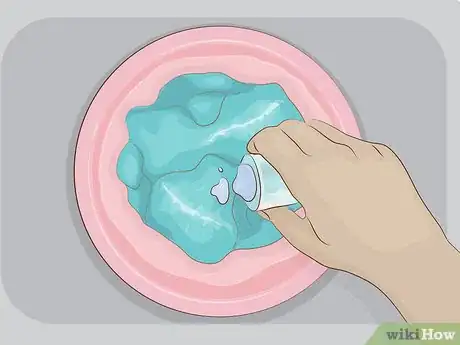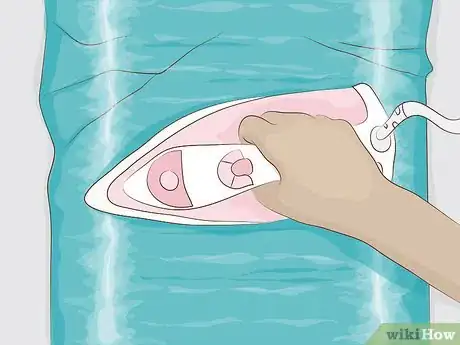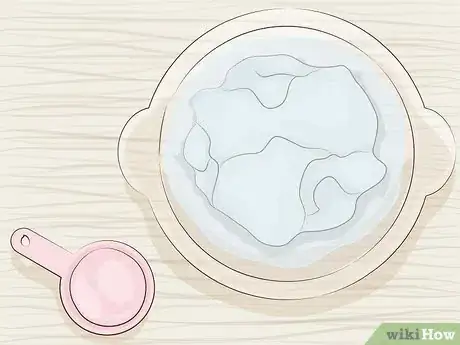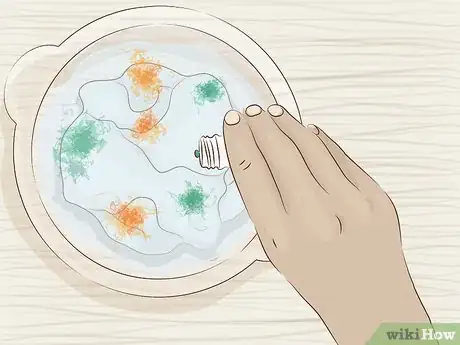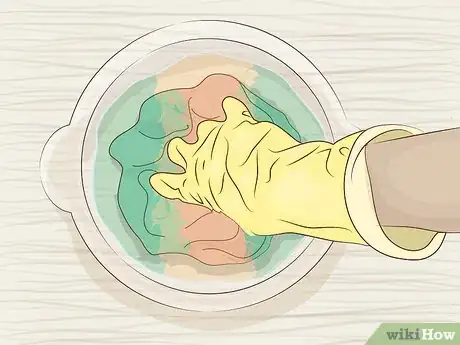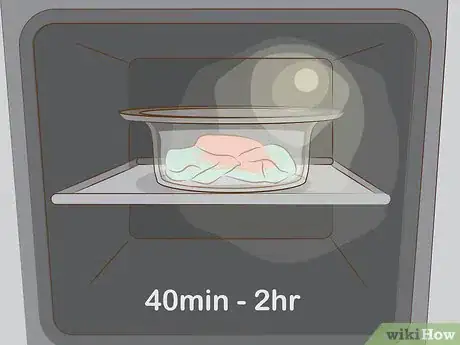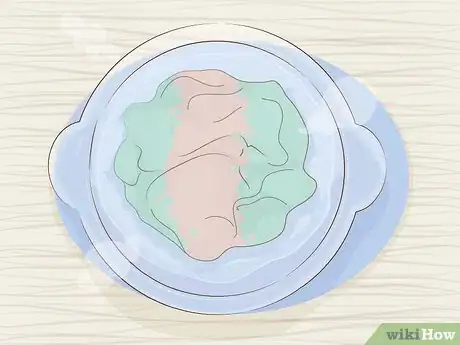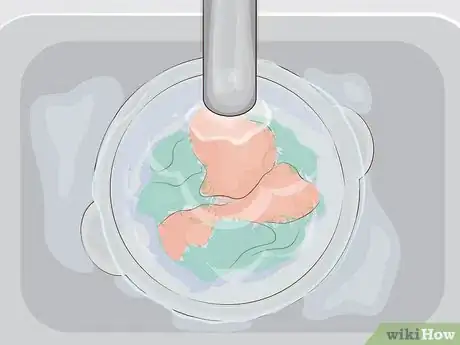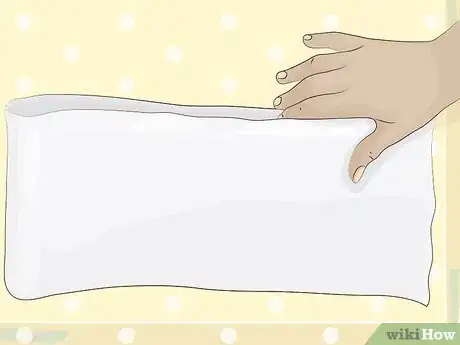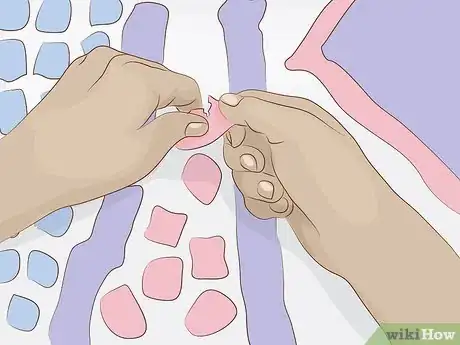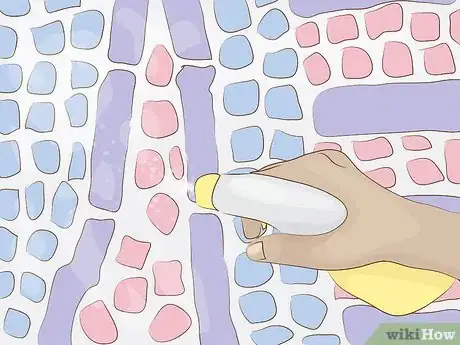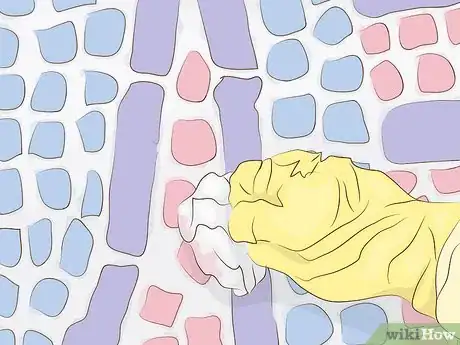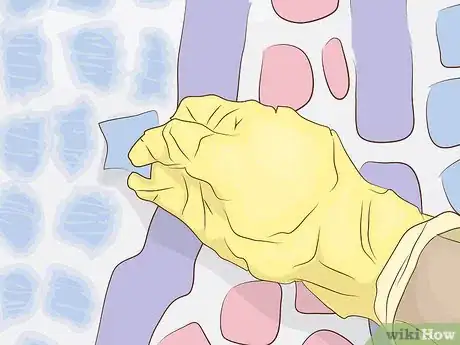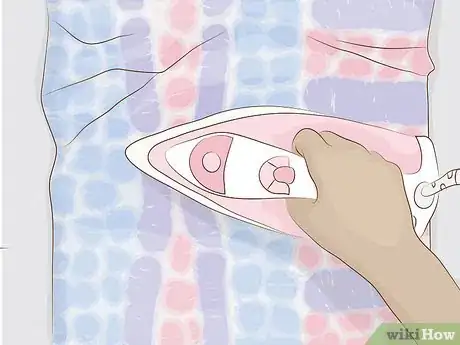This article was co-authored by wikiHow Staff. Our trained team of editors and researchers validate articles for accuracy and comprehensiveness. wikiHow's Content Management Team carefully monitors the work from our editorial staff to ensure that each article is backed by trusted research and meets our high quality standards.
This article has been viewed 16,073 times.
Learn more...
The right scarf can add the perfect finishing touch to an outfit, especially if you customize the scarf to match what you're wearing. Silk scarves are actually fairly easy to dye at home, so you can create the perfect color combination to match your wardrobe. Powdered acid dyes and food coloring can both dye silk when combined with an acid, but the process requires heat, such as an oven or microwave. If you prefer a non-heated method, bleeding tissue paper and water can help transform a silk scarf into a colorful custom piece that makes a lovely gift.
Steps
Coloring a Silk Scarf with Acid Dyes
-
1Create pleats in the scarf. Fold a white silk scarf in any way that you like to create random pleats in the fabric. Use two rubber bands to loosely secure the pleats at either end of the scarf.[1]
- If you prefer, you can twist or roll the scarf to create random pleats. The pleats help create a textured look when you apply the dye.
-
2Soak it in hot water. Fill a large pot or bucket with hot water. Dip your scarf into the water to thoroughly soak it, and then squeeze it to remove all of the excess water.[2]
- You don't need to use boiling water to soak the scarf. Hot water from your sink is sufficient.
Advertisement -
3Twist and roll the scarf. After you've squeezed the excess water from the scarf, twist the scarf tight to create a tight roll. Next, wrap the twisted scarf around your finger to create a faux knot.[3]
- Once you've created a knot with scarf, you can crumple it up further with your hand.
- Feel free to be creative when it comes to twisting, rolling, and knotting the scarf. You'll achieve different patterns with the dye depending on how you knot it up.
-
4Sprinkle the acid dye over the scarf. When your scarf is knotted, place it in a large plastic zipper bag. Add a ½ teaspoon (1 ½ g) of powdered acid dye in your chosen shade to the bag, sprinkling it over wet fabric.[4]
- Powdered acid dye is used to dye silk, wool, other protein fibers, and nylon, and is available in a wide range of colors. You can find it at most crafting supply stores.
- If you're dyeing an extremely large silk scarf, you may need to add a little more of the dye. When you sprinkle it over the scarf, most of the fabric should be covered.
-
5Add the citric acid. Once the acid dye is sprinkled over the scarf, spoon 1 tablespoon (18 g) of citric acid over the wet silk. Distribute it as evenly as you can over the scarf.[5]
- You can find citric acid in the canning section of most grocery stores. It's also available from online retailers.
-
6Pour in enough water to soak the scarf and mix the ingredients. After you've sprinkled the dye and citric acid over the scarf, add enough water to the bag to saturate the scarf. Start with ½ cup (118 g), and add more if the scarf isn't totally soaked. Seal the bag and squeeze and massage the scarf with the water, dye, and citric acid to help the powders dissolve and penetrate the silk.[6]
-
7Microwave the scarf for a couple of minutes. When you've massaged the water, dye, and citric acid into the scarf, open the bag slightly so there is a 2-inch (5-cm) gap at one end. Place it in the microwave, and heat it on high for about 2 minutes. The bag will swell as it heats, so you may need to stop the microwave and allow it to deflate before heating it again.[7]
- You can tell that the scarf is done heating when the water in the bag begins to turn clear. If it isn't clear after 2 minutes, continue heating it in 2-minute intervals.
-
8Allow the scarf to cool before rinsing it out. When the scarf is finished heating, open the bag and allow it to cool for about 5 minutes. Place it in the sink, and rinse it with cool water before removing the rubber bands. Continue rinsing the scarf until the water runs clear.[8]
-
9Wash the scarf with fabric detergent. After you've rinsed the scarf, handwash it with lukewarm water and a synthrapol fabric detergent. Rinse the detergent from the scarf with cool water until the water runs clear.[9]
- If you like, you can treat the scarf with liquid fabric softener if it feels a little stiff.
-
10Dry and iron the scarf. When you're finished rinsing the scarf, lay it out flat to air dry. Once it's completely dry, use an iron on the silk setting to smooth out any wrinkles so the scarf is ready to wear.[10]
Dyeing a Silk Scarf with Food Coloring
-
1Soak the scarf overnight in an oven-safe container. Find a baking dish that's large enough to hold a white silk scarf. Fill the container with cool water and 1 cup (237 ml) of white vinegar. Allow the scarf to soak for 8 hours or overnight.[11]
- As the silk soaks, you'll notice that it becomes more translucent so it can take the color more easily.
-
2Preheat the oven. When you're ready to dye the scarf, you need the oven to be hot enough to help the silk absorb the color. Set the temperature to 175°F (79°C), and allow the oven to fully preheat.[12]
-
3Pour out the water until the scarf is just covered and add more vinegar. After the scarf has soaked overnight, pour out the water from the baking dish. Leave just enough water so the silk is barely covered and pour 2 cups (474 ml) of white vinegar into the dish.[13]
- If you accidentally spill out too much water, just add it back in so the scarf is mostly covered.
-
4Add food coloring to the water to get the desired color. When you've spilled out the excess water and added the vinegar, squeeze several drops of liquid food coloring in your desired color(s) into the dish. Start with about 8 to 10 drops of food coloring, and add more until you achieve as bright or deep a color as you'd like.[14]
- Be creative with the food coloring. You can add food coloring in one color to one half of the scarf and another color to the other half instead of settling for a solid color.
-
5Mix the coloring around with the scarf. Put on rubber gloves to protect your hands from the coloring, and swirl the coloring around with the silk. Continue to mix the dye and vinegar mixture together with the silk to help it begin soaking into the scarf.[15]
- The color won't begin to set until you heat the scarf, so play around with the scarf and dye until you are happy with the pattern.
-
6Heat the scarf in the oven for at least 40 minutes. When the scarf and dye are mixed, place the baking dish in the preheated oven. Allow the scarf to heat in the bath for 40 minutes to 2 hours, or until the water mixture turns clear.[16]
- Check on the scarf every 20 minutes while it's heating to see how clear the dye bath is.
-
7Let the scarf cool. When the dye bath turns clear, remove the baking dish from the oven. Allow the scarf to cool in the dish until it comes to room temperature, which can take up to an hour.[17]
-
8Wash the scarf and hang it to dry. Once the scarf is cool enough to handle, rinse it in the sink with lukewarm water. Add a mild soap and wash the silk until the water runs clear. Hang the scarf to air dry.[18]
- The scarf will be fairly wrinkled when it's finished drying. You can use an iron to smooth it so it's ready to wear.
Staining a Silk Scarf with Tissue Paper
-
1Lay the scarf out on a protected work surface. To keep your countertop or table from stains, use a large plastic trash bag to cover the surface and secure it in place with masking tape. Fold a white silk scarf in half, and place it on the plastic.[19]
- You can use plastic sheeting to cover your work surface if you prefer.
-
2Tear the tissue paper into pieces and place them on the silk. When the scarf is placed on the work surface, begin tearing up pieces of bleeding tissue paper in two or more different colors. Place the tissue on the scarf in a random pattern until most of the scarf is covered.[20]
- You can find bleeding tissue paper at art supply and craft stores.
- When you place the tissue paper on the scarf, leave some white gaps between the pieces.
-
3Spray the tissue paper with water. Once the tissue paper pieces are in place on the scarf, begin spraying the the paper with plain water. Make sure to cover all of tissue paper with water so it can begin to bleed onto the silk.[21]
-
4Blot the scarf with a paper towel. Put on a pair of latex or rubber gloves to protect your hands from staining, and begin to blot the scarf and tissue paper with a piece of paper towel. Work until you blot away all of the excess water.[22]
- Try not to disrupt the tissue paper too much when you blot the scarf.
- You'll likely need to replace the paper towel throughout the blotting process when it becomes too wet to absorb any more water.
-
5Remove the tissue paper and dry the scarf. After you've blotted the entire scarf, lift the tissue paper pieces from the scarf and discard them. Put the scarf in the dryer, and dry it on high for 20 minutes so the dye has time to set.[23]
- Leave your gloves on when you remove the tissue paper pieces from the scarf so your fingers don't get stained.
-
6Iron your scarf. Once the scarf is dry, place it on an ironing board. Use an iron on the silk setting to carefully iron the scarf so it is smooth and ready to wear.[24]
Things You'll Need
Acid Dye Method
- White silk scarf
- Rubber bands
- Pot or bucket
- Water
- Plastic zipper bag
- ½ teaspoon (1 ½ g) acid dye in your choice of color
- 1 tablespoon (18 g) citric acid
- Microwave
- Synthrapol dye remover
Food Coloring Method
- White silk scarf
- 3 cups (709 ml) white vinegar
- Water
- Oven-safe container
- Liquid food coloring in your chosen colors
- Rubber gloves
- Oven
Tissue Paper Method
- Plastic garbage bags
- Masking tape
- Bleeding tissue paper
- White silk scarf
- Spray bottle with water
- Latex or rubber gloves
- Dryer
- Iron
- Ironing board
References
- ↑ http://www.dharmatrading.com/home/the-5-minute-silk-scarf.html
- ↑ http://www.dharmatrading.com/home/the-5-minute-silk-scarf.html
- ↑ http://www.dharmatrading.com/home/the-5-minute-silk-scarf.html
- ↑ http://www.dharmatrading.com/home/the-5-minute-silk-scarf.html
- ↑ http://www.dharmatrading.com/home/the-5-minute-silk-scarf.html
- ↑ http://www.dharmatrading.com/home/the-5-minute-silk-scarf.html
- ↑ http://www.dharmatrading.com/home/the-5-minute-silk-scarf.html
- ↑ http://www.dharmatrading.com/home/the-5-minute-silk-scarf.html
- ↑ http://www.dharmatrading.com/home/the-5-minute-silk-scarf.html
- ↑ http://www.dharmatrading.com/home/the-5-minute-silk-scarf.html
- ↑ https://www.allfreeknitting.com/video-basics/how-to-dye-silk-hankies
- ↑ https://www.allfreeknitting.com/video-basics/how-to-dye-silk-hankies
- ↑ https://www.allfreeknitting.com/video-basics/how-to-dye-silk-hankies
- ↑ https://www.allfreeknitting.com/video-basics/how-to-dye-silk-hankies
- ↑ https://www.allfreeknitting.com/video-basics/how-to-dye-silk-hankies
- ↑ https://www.allfreeknitting.com/video-basics/how-to-dye-silk-hankies
- ↑ https://www.allfreeknitting.com/video-basics/how-to-dye-silk-hankies
- ↑ https://www.allfreeknitting.com/video-basics/how-to-dye-silk-hankies
- ↑ https://www.southernliving.com/home/mothers-day-tissue-dyed-silk-scarf
- ↑ https://www.southernliving.com/home/mothers-day-tissue-dyed-silk-scarf
- ↑ https://www.southernliving.com/home/mothers-day-tissue-dyed-silk-scarf
- ↑ https://www.southernliving.com/home/mothers-day-tissue-dyed-silk-scarf
- ↑ https://www.southernliving.com/home/mothers-day-tissue-dyed-silk-scarf
- ↑ https://www.southernliving.com/home/mothers-day-tissue-dyed-silk-scarf
